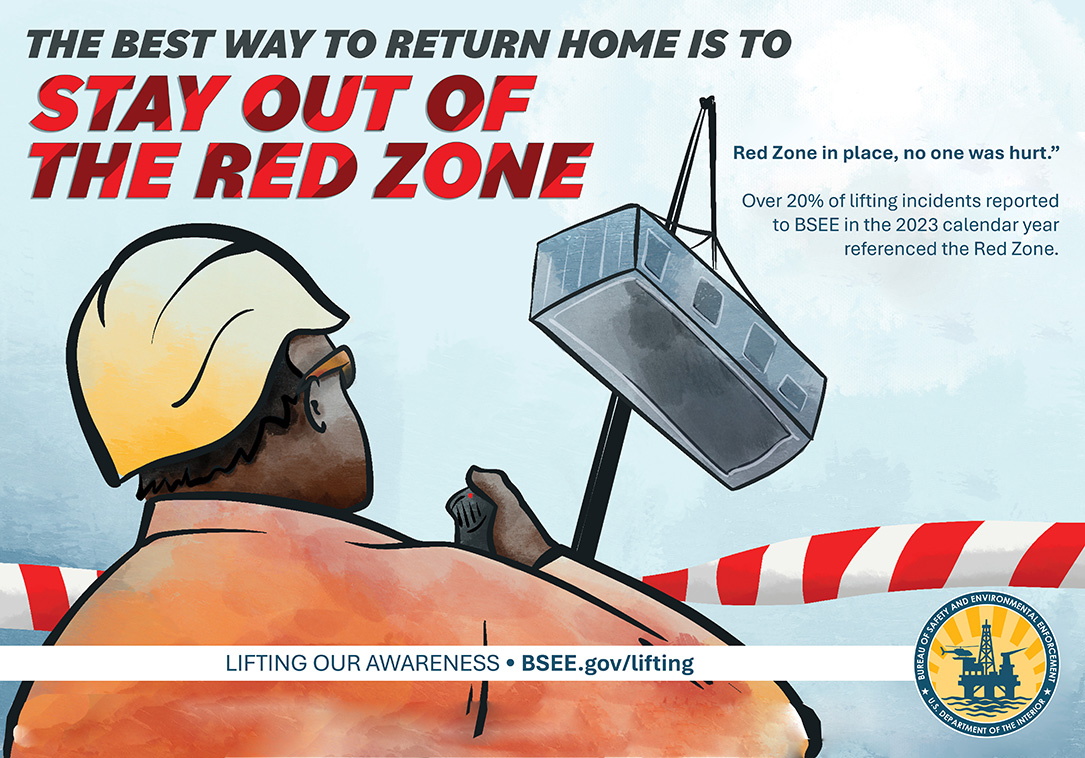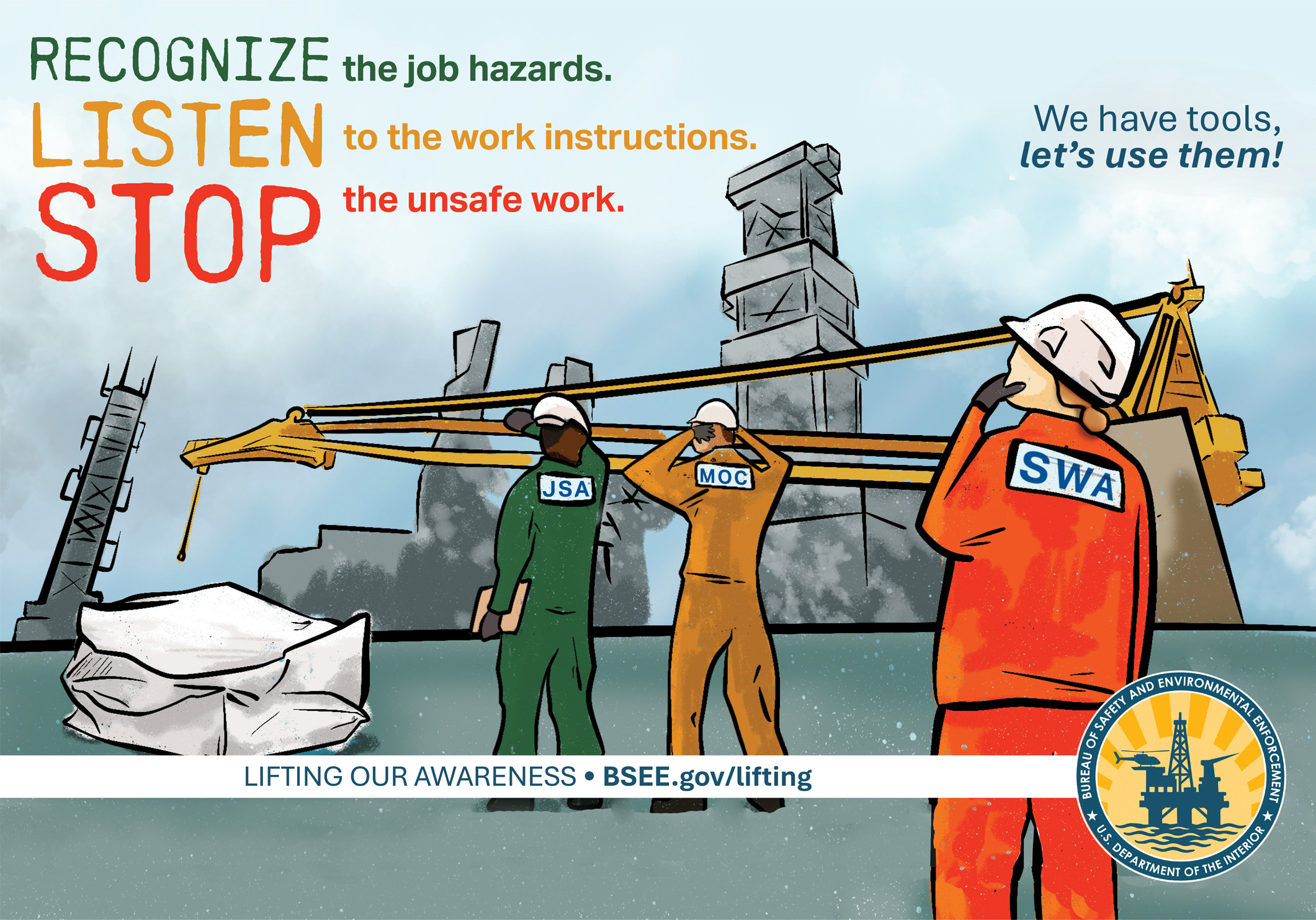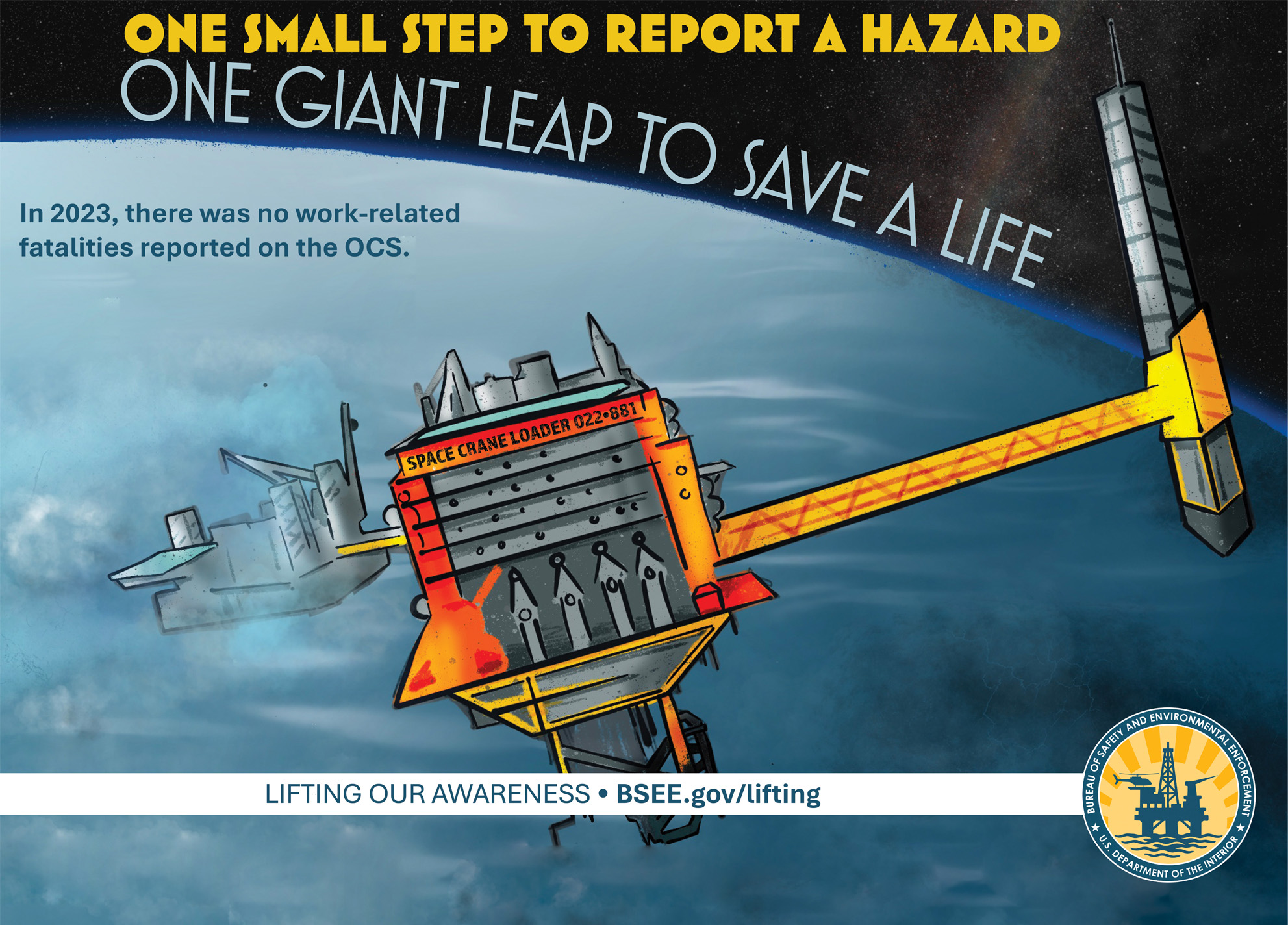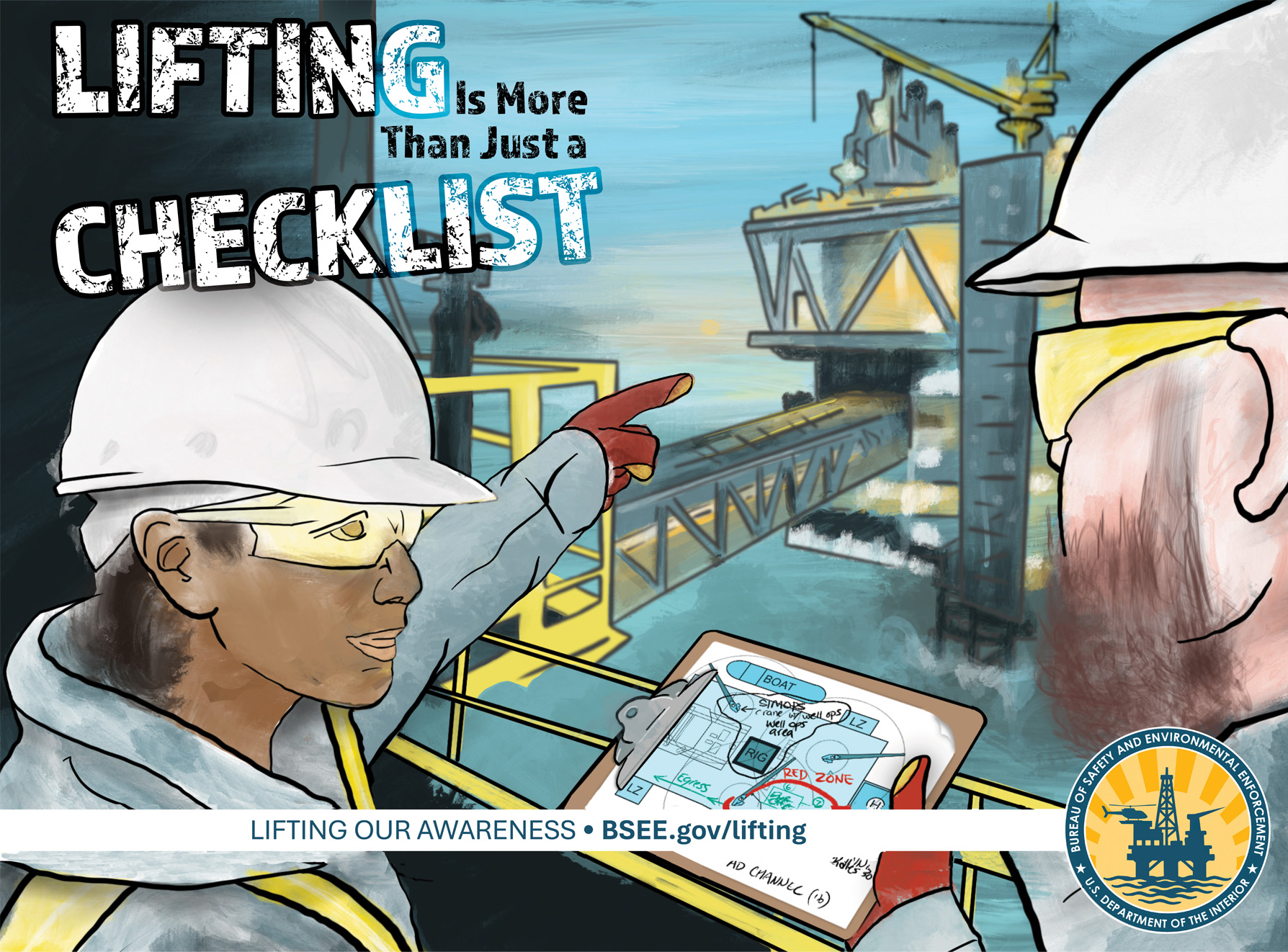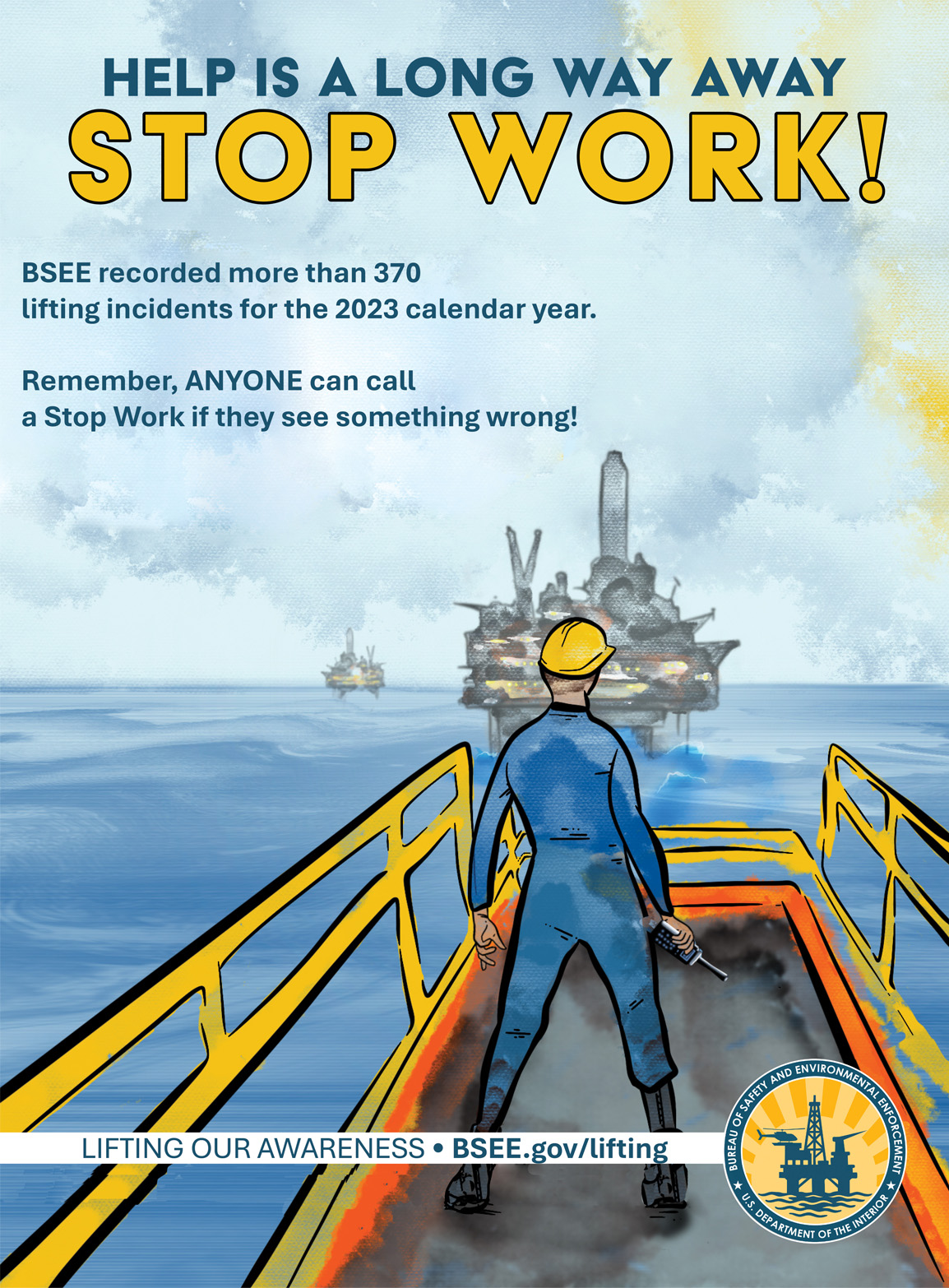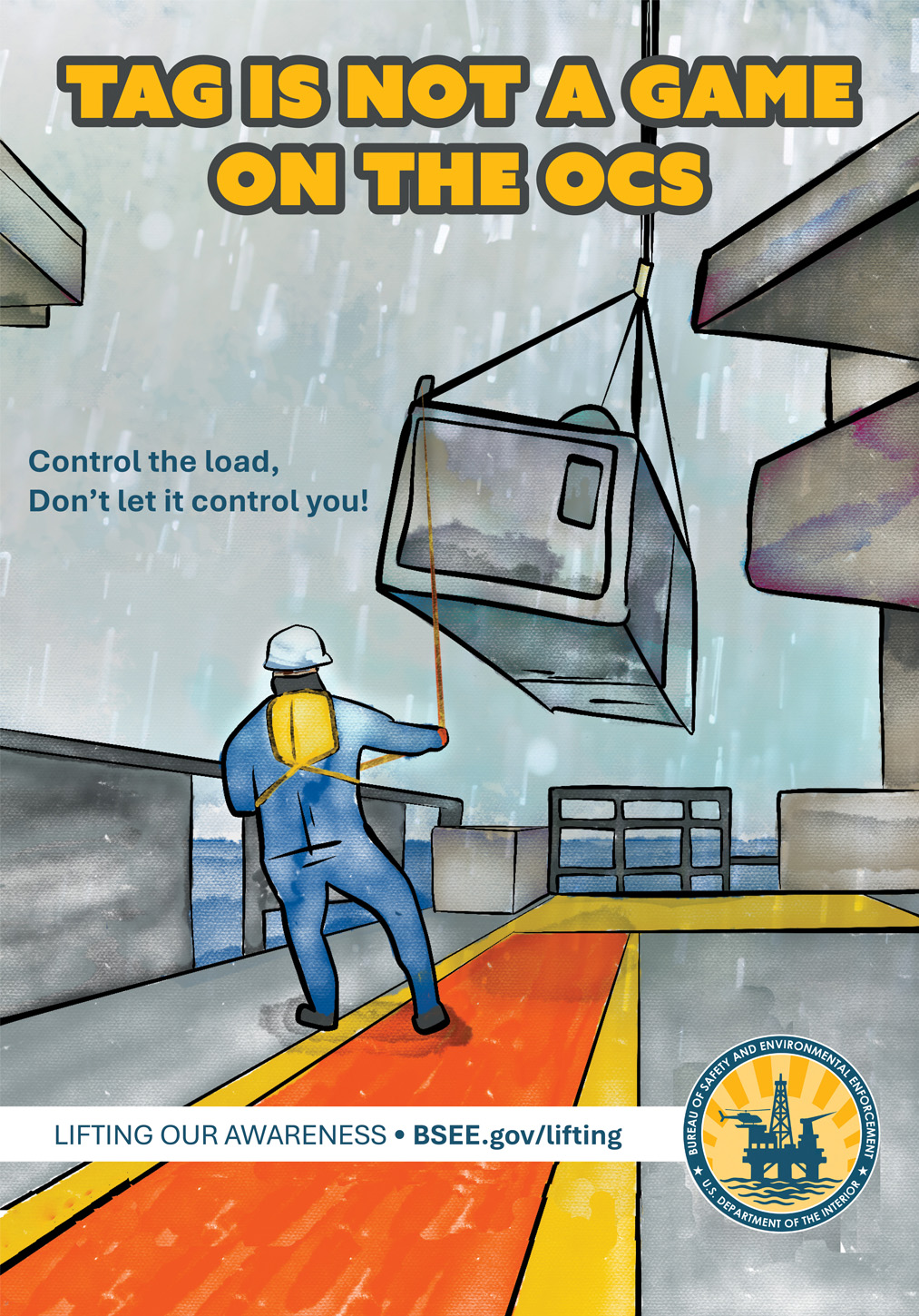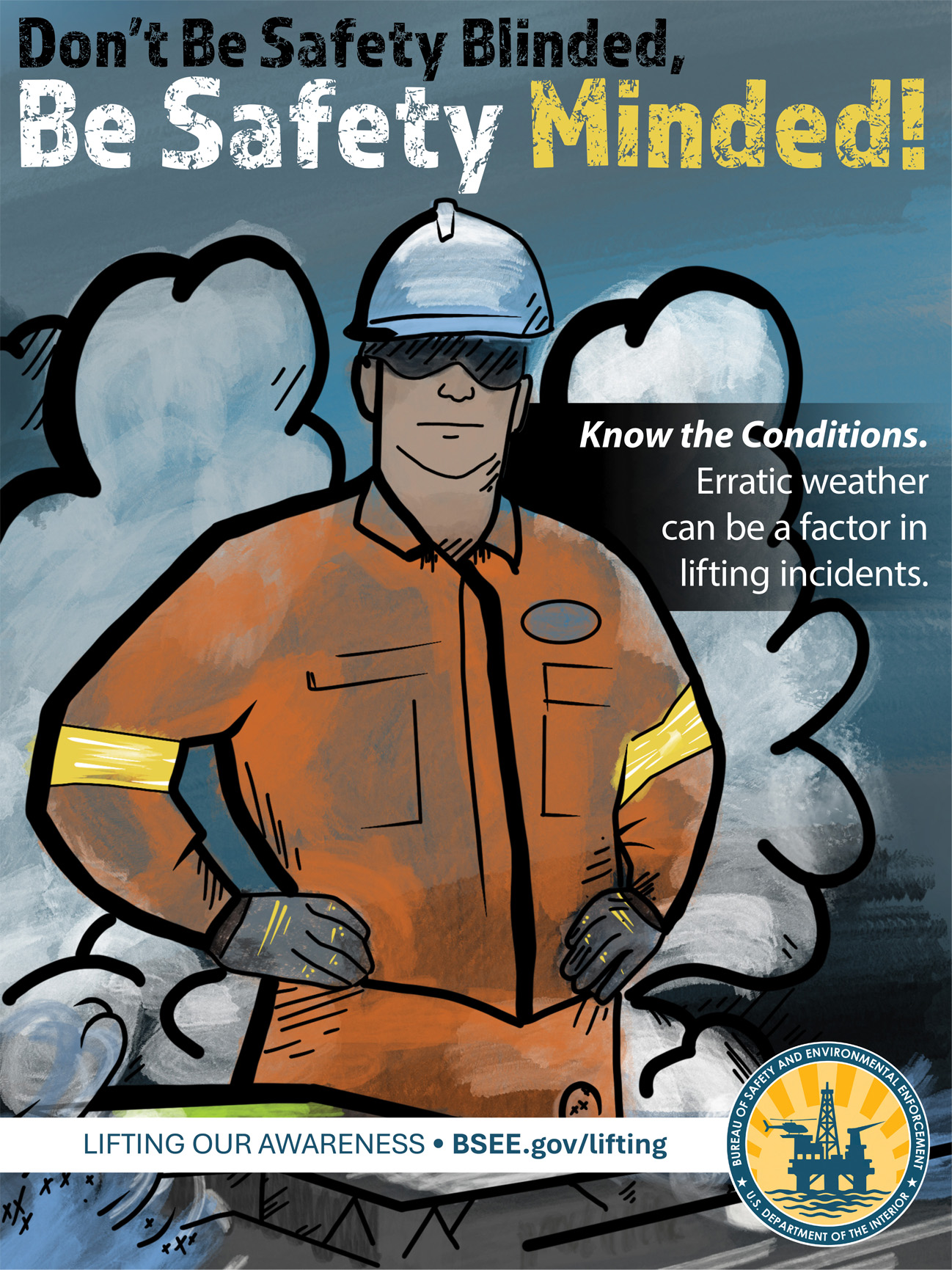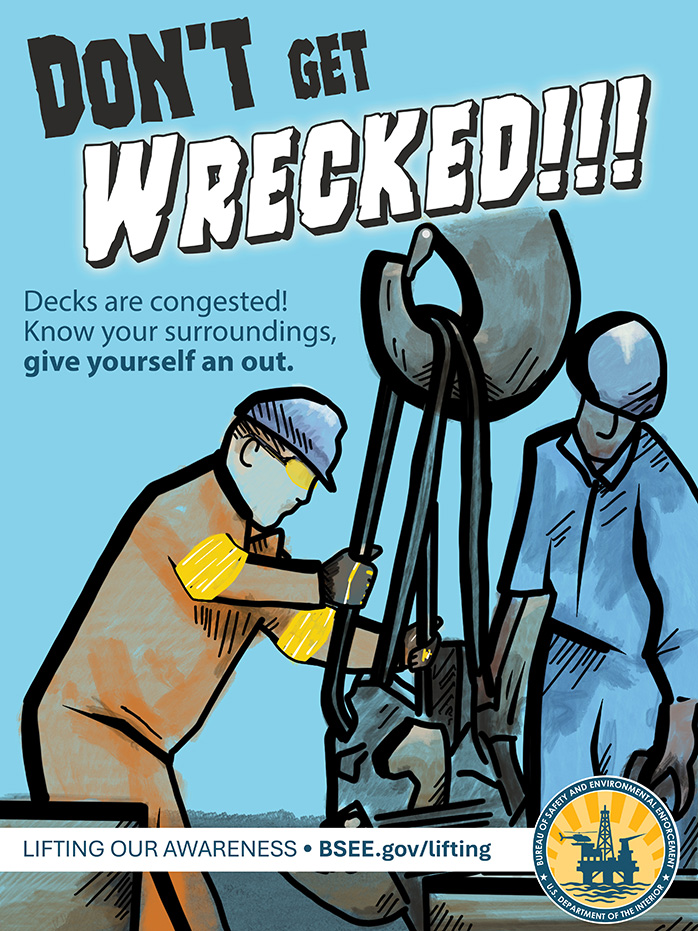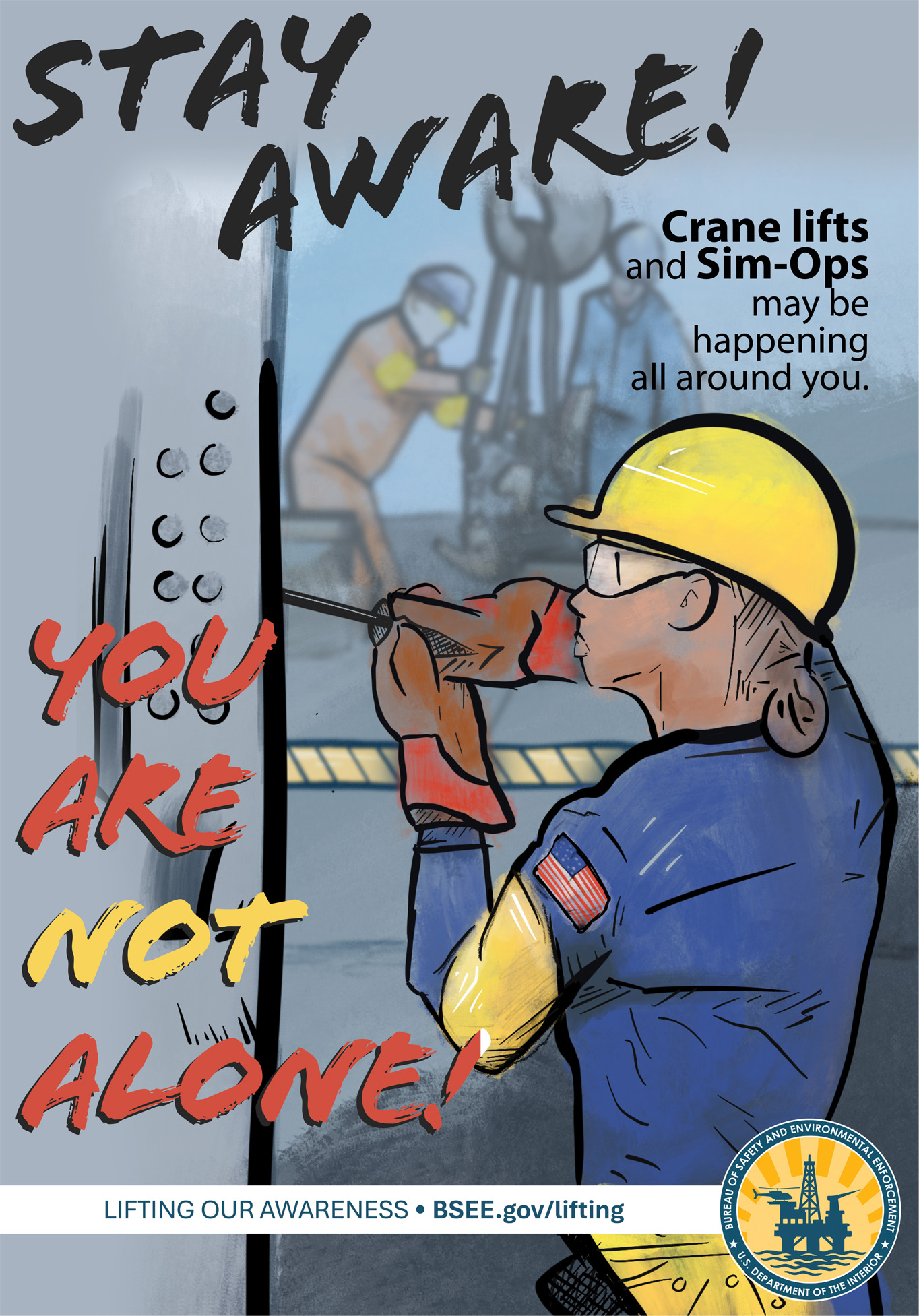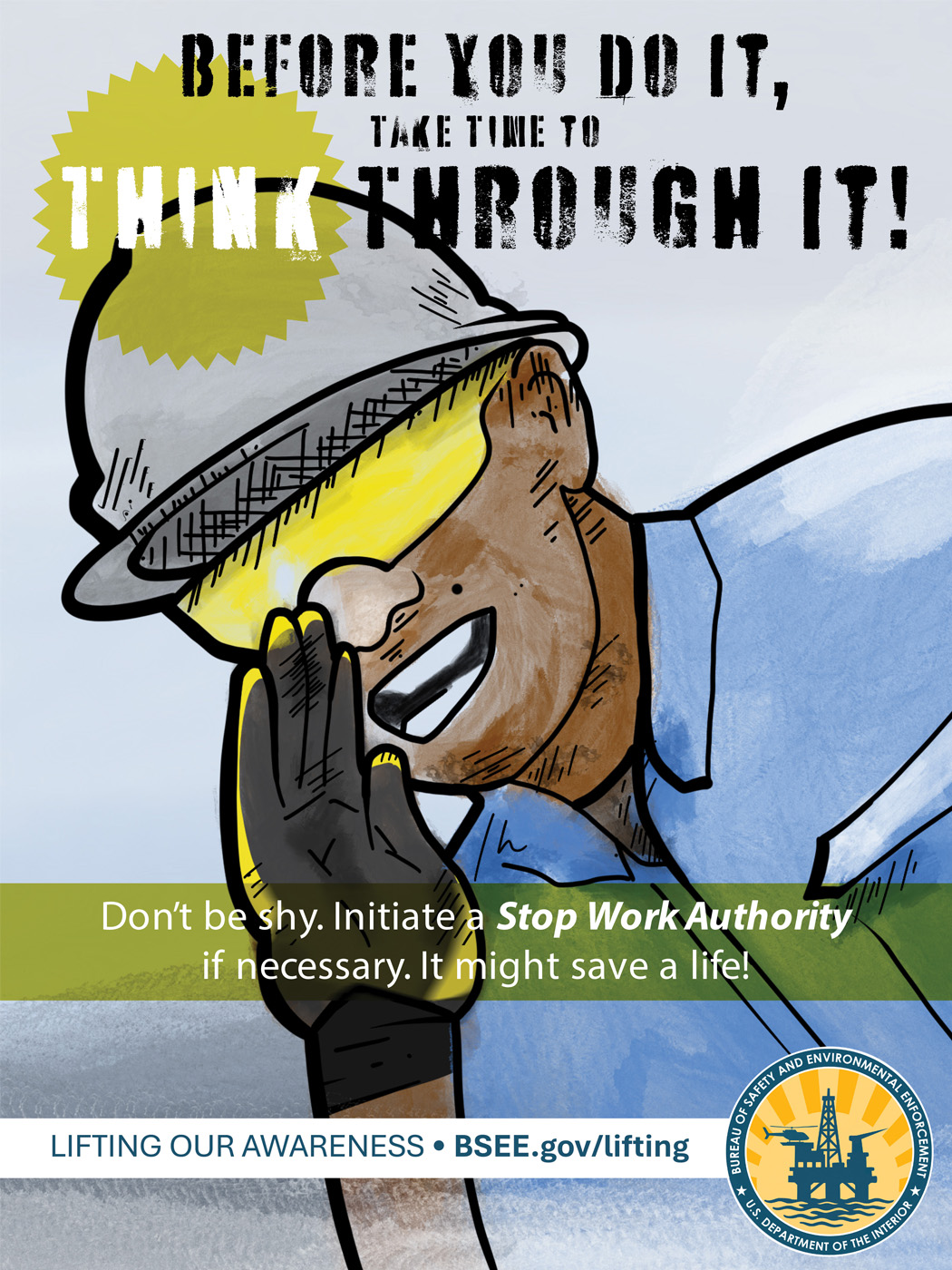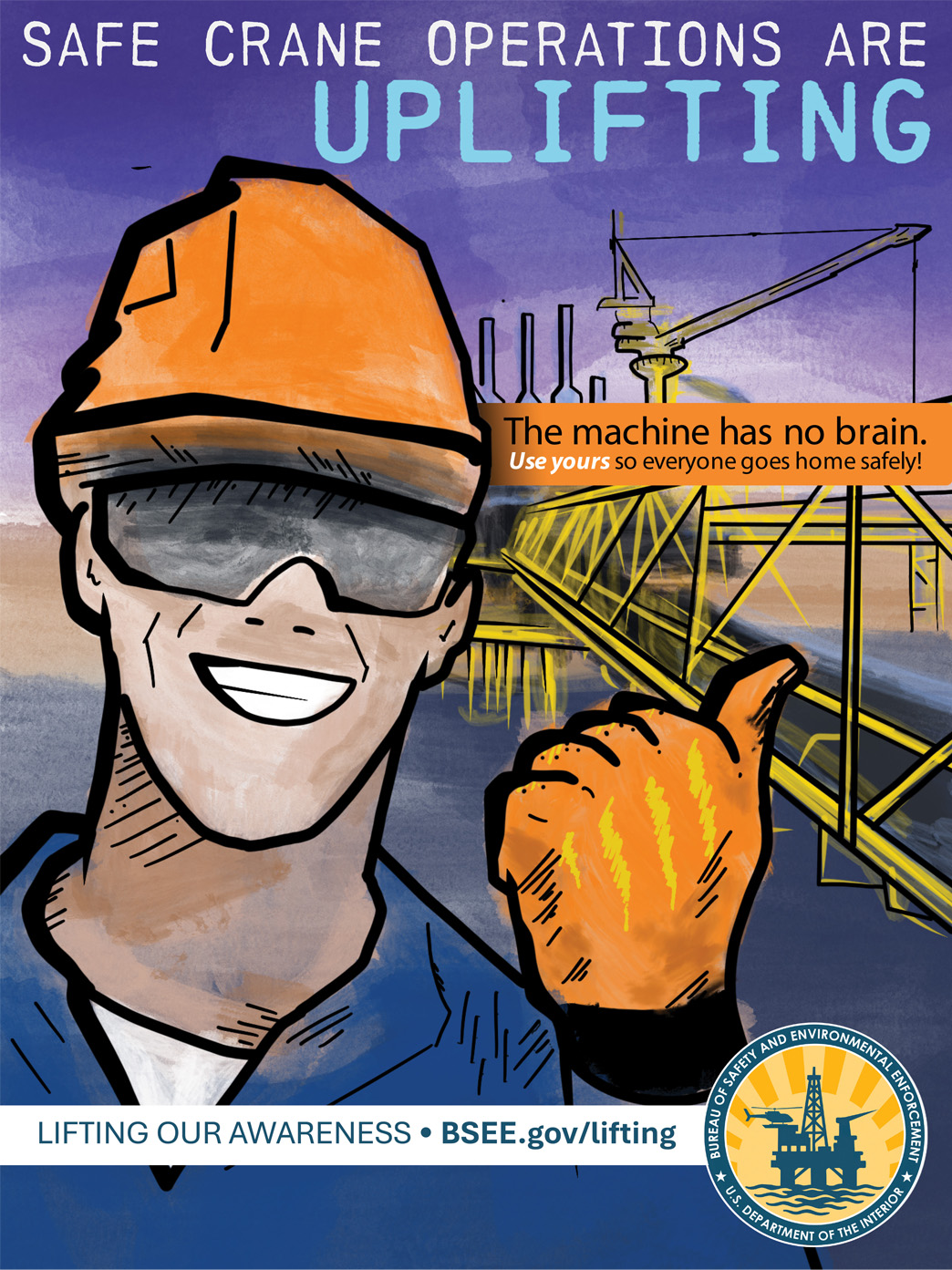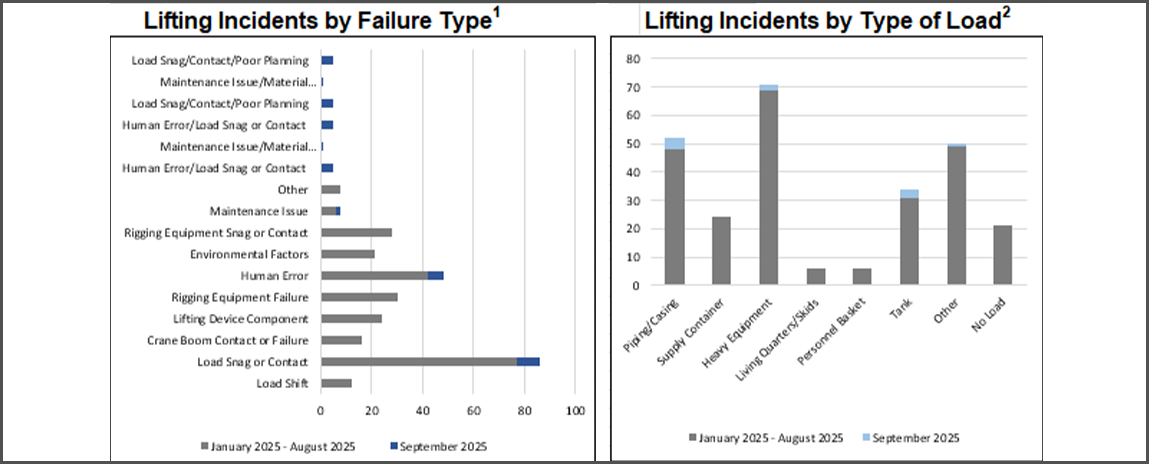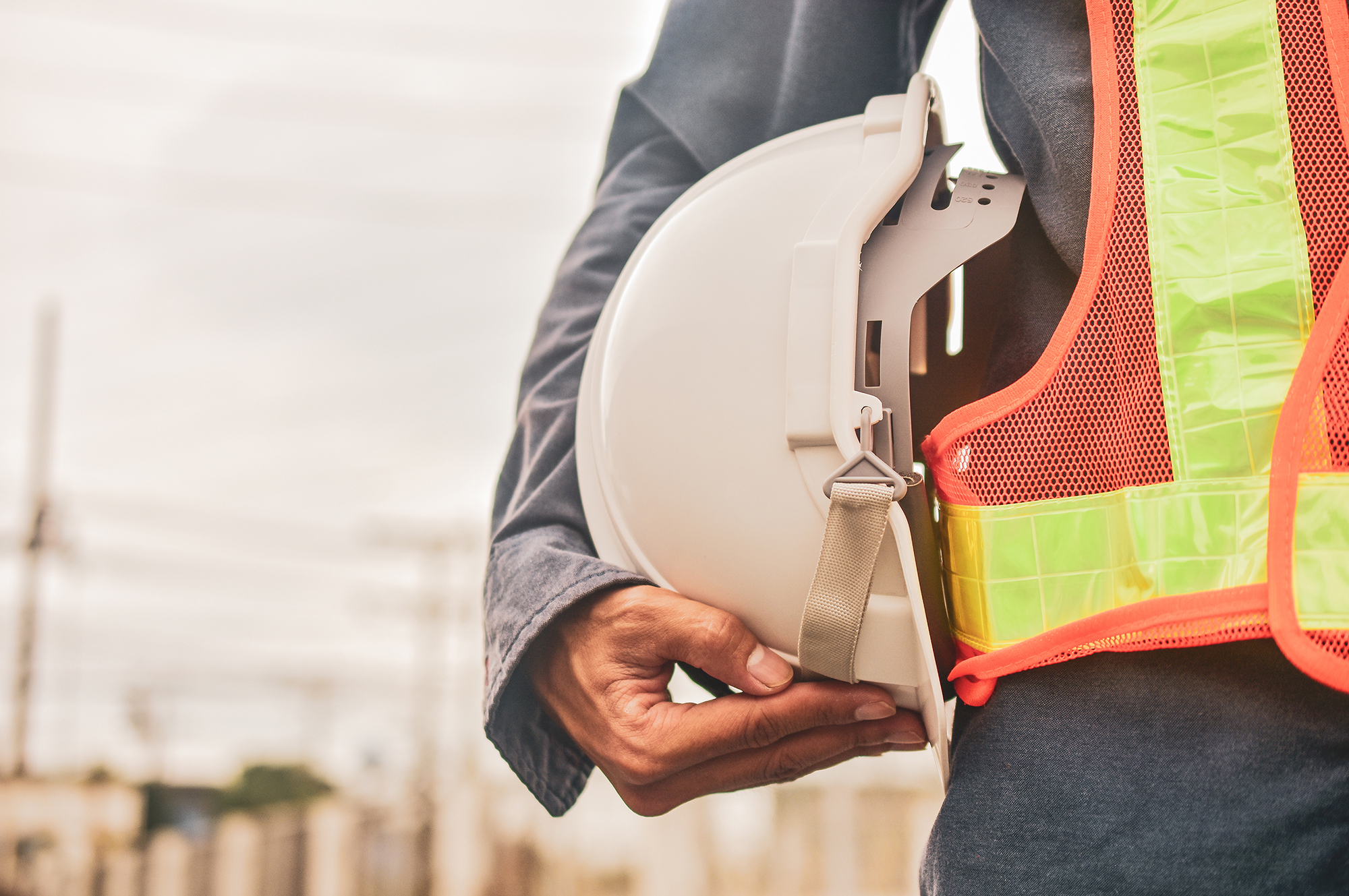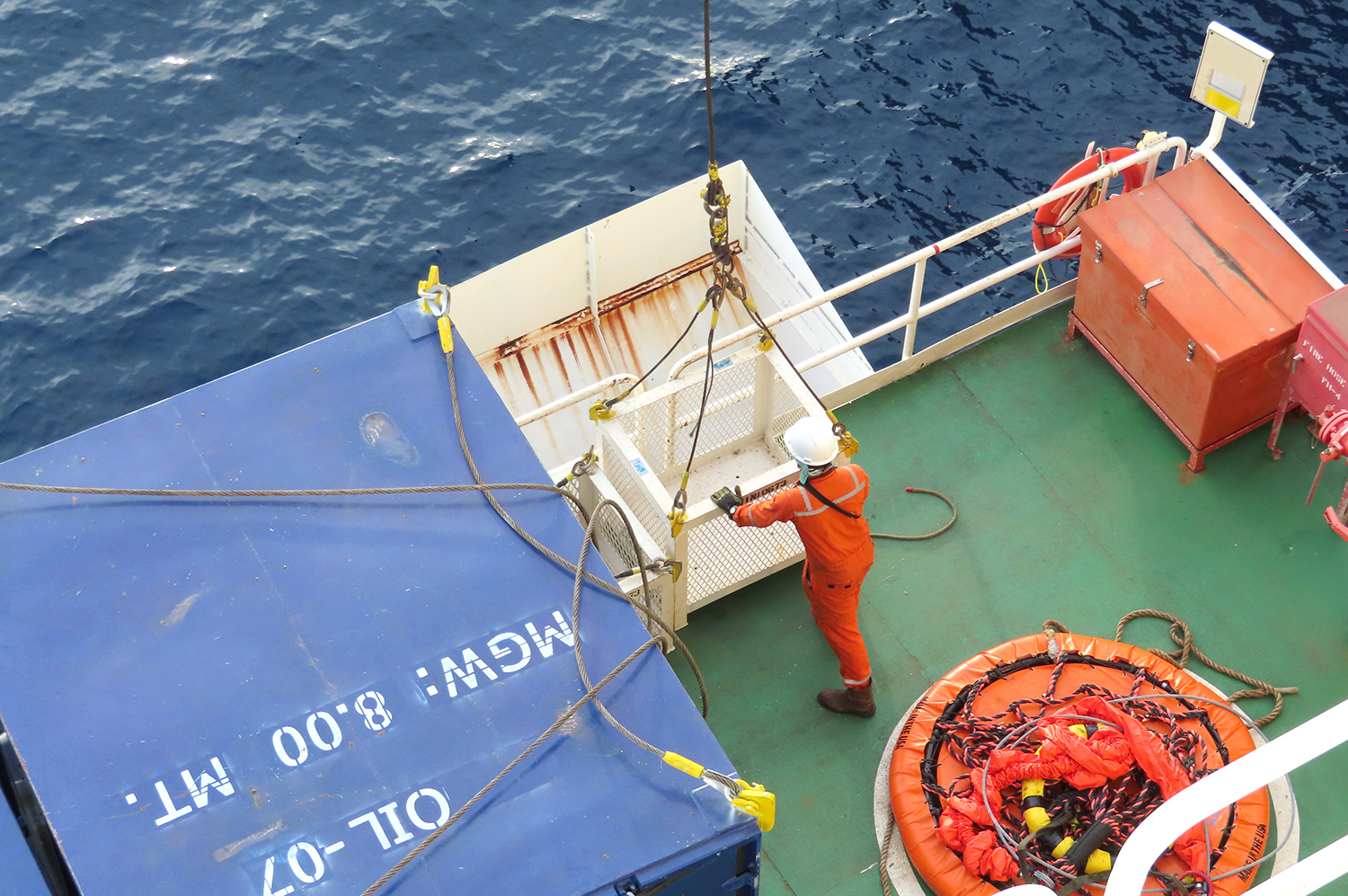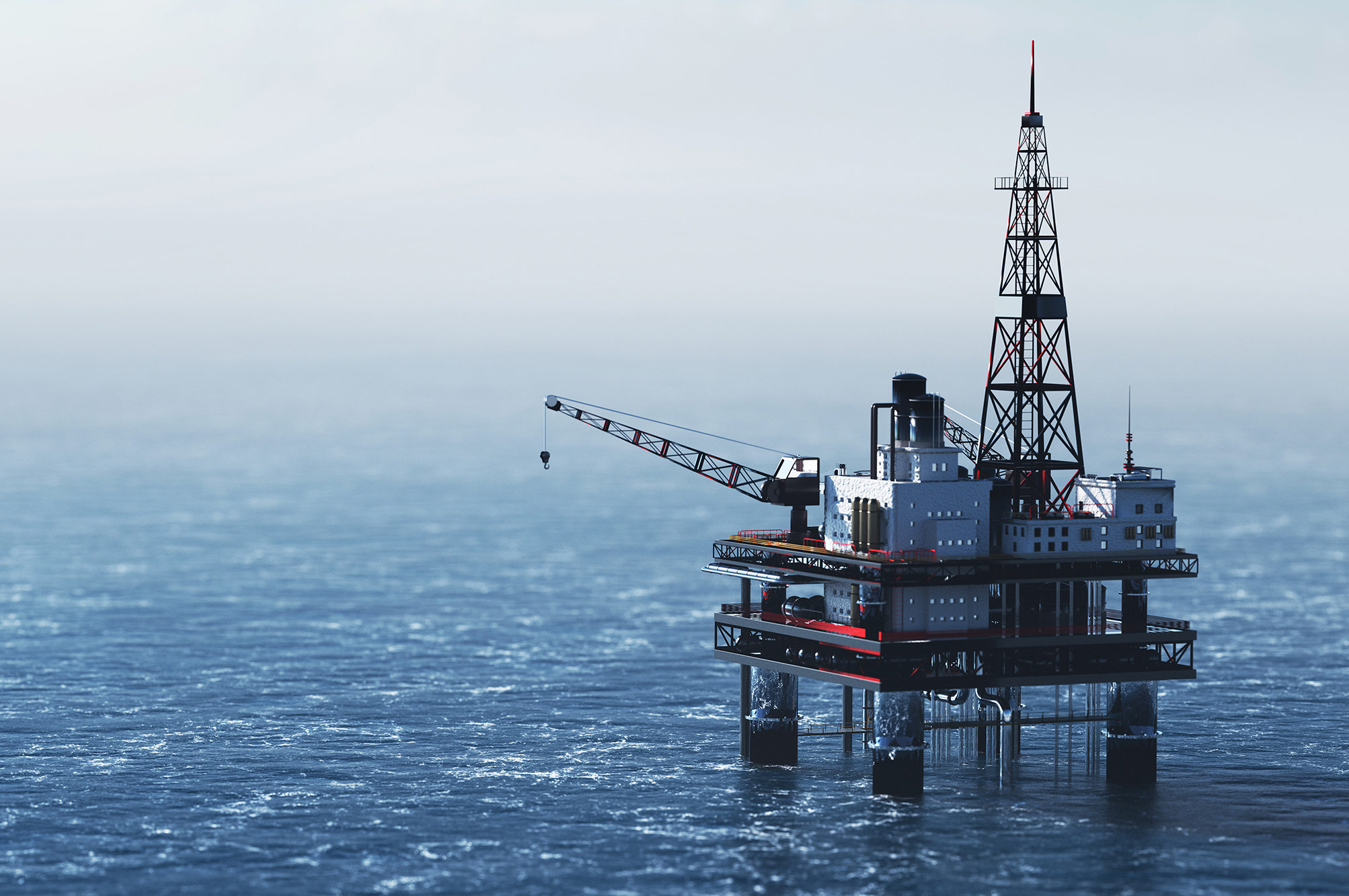Why Lifting Safety is Important
In mid-2020, the Bureau of Safety and Environmental Enforcement (BSEE) formed a lifting initiative team made up of personnel with various backgrounds from its district, regional, and headquarters offices with the goal of reducing the number and severity of lifting incidents on the U.S. Outer Continental Shelf (OCS). After meeting with various stakeholders, including industry groups, individual operators, crane inspectors and safety instructors, our team decided that the best opportunity we had to improve safety performance of offshore lifting activities was to focus on improving worker awareness before, during, and after conducting the “next” lift. With this mission in mind, our “Lifting Our Awareness” initiative was launched. With information gathered from reviewing lifting incidents reported to BSEE and engaging industry, our Team concluded that approximately 90% of the lifting incidents reported to BSEE have occurred during what can be considered as a routine (I.e., frequently occurring) lift for that facility or work crew. Because special or unusual (e.g., “heavy lifts”) frequently require additional planning, oversight and safety reviews, these lifts usually are completed without incident. Our Team will be focusing on improving safety during the routine lifts as our best opportunity to drive lifting safety.
This website will support and broadcast the activities of the Lifting Our Awareness initiative, posting tools and observations developed by the BSEE team, and ideas and successes posted by our public stakeholders and partners with the goal of reducing offshore lifting incidents.
Tools for Lifting Our Awareness
Poster Series - These posters are available to the public to incorporate into their individual Safety Campaigns. These posters capture recurring themes reflected in the lifting incidents reported to BSEE.
Lifting Playbook - Using a sports analogy, BSEE’s Lifting Playbook is meant to be a template for industry to incorporate into the pre-lift planning procedures. Not intended to replace the Job Safety Analysis (JSA), a playbook talk immediately before conducting the next lift focusing on the critical few, lift specific safety challenges could result in the successful “touchdown”.
Lifting Pocket Guide - When planning and conducting a lift, even a routine lift, there are a lot of steps to focus on that help achieve a safe lift. This Pocket Guide helps remind everyone to focus on the critical few issues during any pre-lift planning or safety talk.
BSEE LIFT - As part of BSEE's commitment to collaborate with industry to drive lifting safety improvement, the BSEE Safe Lifting Team developed the BSEE Lifting Incident Findings Tool (BSEE LIFT) to address the offshore industry's growing need for timely and insightful information on lifting incidents. Updated monthly, you can access the latest BSEE LIFT below.
Lifting FAQ
§250.108 (e)(58) API RP 2D, Operation and Maintenance of Offshore Cranes, Sixth Edition, May 2007; incorporated by reference at §250.108;
§250.198 (e)(81) API Spec. 2C, Specification for Offshore Pedestal Mounted Cranes, Sixth Edition, March 2004, Effective Date: September 2004; incorporated by reference at § 250.108;
Certain material is incorporated by reference into this part with the approval of the Director of the Federal Register under 5 U.S.C. 552(a) and 1 CFR part 51. All incorporated material is available for inspection at the Houston BSEE office at 1919 Smith Street Suite 14042, Houston, Texas 77002 and is available from the sources indicated in this section. It is also available for inspection at the National Archives and Records Administration (NARA). To make an appointment to inspect incorporated material at the Houston BSEE office, call 1–844–259–4779. For information on the availability of this material at NARA, call 202–741–6030 or go to http://www.archives.gov/federal-register/cfr/ibr-locations.html.
BSEE has created a Potential Incident of Non-Compliance (PINC) list specifically for crane operations called the Crane Material Handling Equipment I-PINCs
You must report all incidents involving crane or personnel/material handling operations that occur on the area covered by your lease, right-of-use and easement (RUE), pipeline right-of-way (ROW), or other permit issued by BOEM or BSEE, and that are related to operations resulting from the exercise of your rights under your lease, RUE, pipeline ROW, or permit. See §250.186 - .190 Information and Reporting Requirements.
According to §250.188 (a) You must report the following incidents to the District Manager immediately via oral communication, and provide a written follow-up report (hard copy or electronically transmitted) within 15 calendar days after the incident: (8) All incidents involving crane or personnel/material handling operations. See Notice To Lessees and Operators (NTL) 2019-N05 for additional information about Incident and Spill Reports.
Did You Know:
- BSEE receives on average approximately five lifting incident reports every seven days?
- Inadequate work direction, failure to recognize the hazards, and deviation from established work procedures appear to be common contributors to many of these incidents?
BSEE Lifting Incident Findings Tool (BSEE LIFT)
– Last updated: 12/15/2025
September 2025 Lifting Incidents - Monthly Highlights
- Throughout September, multiple lifting-related incidents were reported across offshore operations. While no serious injuries occurred, the events highlight recurring themes that continue to drive risk during crane and material-handling activities.
- Several incidents involved load contact or snagging, particularly during tight landings, blind lifts, or when equipment protrusions were not fully accounted for in the lift path. Mechanical and equipment failures—including sling failures, winch issues, and unexpected engine or wire rope failures—also contributed to high-potential events, though secondary retention systems prevented more serious outcomes.
- Additional incidents stemmed from hose handling, chemical tote movement, and pipe transfer operations, emphasizing the need for improved load control, clear communication between operators and riggers, and thorough pre-lift inspections. Positive actions such as timely all-stop calls, adherence to red-zone protocols, and rapid reporting helped prevent further escalation in several cases.
- Overall, September’s activity reinforces the importance of strong lift planning, effective use of taglines, proactive equipment maintenance, and maintaining situational awareness throughout all stages of lifting operations.
How Can You Help?
The challenge to reduce OCS lifting incidents is bigger than just BSEE or Industry alone. We must work together toward this shared goal.
You can help prevent the next lifting incident across the entire OCS by sharing your success stories. If your organization or facility has implemented a new program, procedure, or training that is driving lifting performance safety improvements, we would like to hear about and share them. Please submit your new lifting safety initiatives and success stories for possible sharing to others through BSEE by emailing us.
Let us know if you have a great idea for making lifting operations safer, and we'll share it here!
How Are We Doing?
This section presents a summary of the lifting incidents reported to BSEE over the past year. This is not intended to be the primary site for accessing BSEE incident data but instead will highlight observed trends and incidents of interest. Recent BSEE Safety Alerts addressing lifting related issues are also listed in this section.

